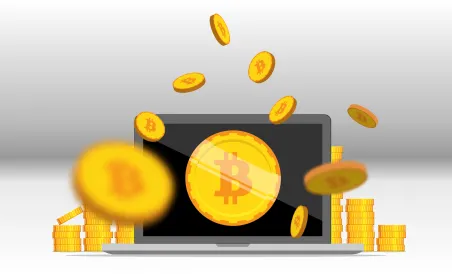On February 16, 2018, the Swiss Financial Market Supervisory Authority (FINMA) published guidelines on how it will handle inquiries about initial coin offerings, sometimes called token sales. Switzerland is the first nation to provide official guidance on ICOs. The move came in response to an overwhelming number of inquiries.
FINMA’s guidelines spell out information that FINMA needs to handle inquiries from ICO organizers. The guidelines enumerate the principles upon which FINMA will base its answers to inquiries. These guidelines add clarity to market participants and discourage money laundering.
An ICO is based on blockchain technology. This distributed ledger technology is the underlying force behind bitcoin, ethers, and other blockchain projects. DLT is decentralized –transactions are recorded onto millions of computers simultaneously. Each block of data is linked to a previous block of data or chained together. The transaction is synchronized, and all nodes reflect the updated data as it occurs. Once a transaction is validated and added to a blockchain, the transaction or asset is theoretically immutable.
ICOs showed up in 2013. They are much like initial public offerings and, in fact, are deliberately based on IPOs. Organizers use ICOs largely to fund future blockchain projects. Cryptocurrency (Bitcoin or Ether, for example) is exchanged where organizers promise investors a share of the organization. Organizers usually employ smart contracts that “store the funds and distribute an equivalent value in the new token at a later point in time.”
With its guidelines, FINMA categorized tokens into three categorizes in addition to affirming the existence of hybrid types of tokens. The term “token” is often used interchangeably with “coins.”
The categories are as follows:
Payment tokens: Payment tokens (synonymous with cryptocurrencies) are tokens that are intended to be used, now or in the future, as a means of payment for acquiring goods or services or as a means of money or value transfer. Cryptocurrencies give rise to no claims on their issuer.
Utility tokens: Utility tokens are tokens that are intended to provide access digitally to an application or service by means of a blockchain-based infrastructure.
Asset tokens: Asset tokens represent assets such as a debt or equity claim on the issuer. Asset tokens promise, for example, a share in future company earnings or future capital flows. In terms of their economic function, therefore, these tokens are analogous to equities, bonds or derivatives. Tokens that enable physical assets to be traded on the blockchain also fall into this category.
With no justification or limits on the amount of cryptocurrency that can be raised, organizations have been able to raise astronomical amounts of currency in very short time spans, with many of them reaching the million-dollar mark in a matter of hours. Already, as of the end of February 2018, organizers have used ICOs to raise at least $3.66 billion.
ICOs as financial instruments have created a conundrum for governmental financial regulators throughout the world. Is it an unregulated security or a modern day example of traditional fund-raising? Is it something else?
At this time, few restrictions apply to ICOs. Not too many nations have braved the daunting process of attempting to add some form of clarity or transparency to ICO transactions. Still, regulators throughout the world are anxious to protect the public from extremely poor investing as well as from devious scam artists.
With IPOs, there are quite a few hoops to jump through, regulators to please, and attorneys to hire–all requiring money that most people do not have. ICOs, with their rather free-for-all culture, cut through all that. But at what price?
The United States has dipped its regulatory toes in the ICO waters. On July 25, 2017, the SEC issued an investigative report that determined that “DAO Tokens are securities under the Securities Act of 1933.” DAO Tokens were the crypto tokens that The DAO was exchanging for bitcoin or ether in an effort to fund their projects. The organization was named after the acronym for the decentralized autonomous organization, or DAO.
In September 2017, the Securities and Exchange Commission announced the creation of a CyberUnit. One of the tasks of this unit is to focus on DLT and ICO misconduct.
In early December 2017, the unit gathered enough information for the SEC to file charges against Quebec-based Dominic Lacroix and Sabrina Paradis-Royer, and PlexCorp. The two individuals, along with firm PlexCorp, were charged with violating U.S. securities laws and defrauding investors to the tune of $15 million.
On February 28, The Wall Street Journal reported that the SEC had issued several subpoenas and information requests to companies that are involved in ICOs.
On March 7, The SEC issued a statement warning that trading digital assets may run afoul of securities regulations. “If a platform offers to trade digital assets that are securities and operates as an ‘exchange,’ as defined by the federal securities laws, then the platform must register with the SEC as a national securities exchange or be exempt from registration,” according to the statement.
Conclusion
They may have gotten off to a relatively slow start, but be assured that the world of governmental regulations is catching up with ICOs, tokens, blockchain, and DAOs, just as it always has done. Whether that is a good thing or a bad thing probably depends on which end of the trade you find yourself on.




 />i
/>i

